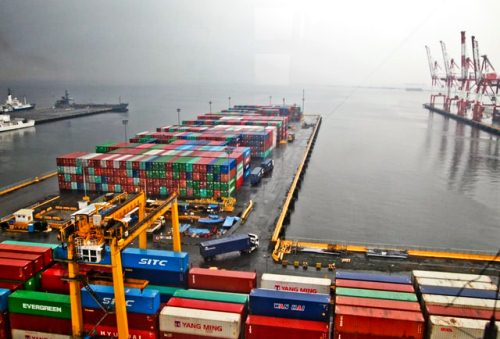- Japan would benefit the most from RCEP tariff concessions, largely because of trade diversion effects
- RCEP tariff concessions will result in lower exports for Cambodia, Indonesia, Philippines and Vietnam
- RCEP will create the world’s largest trading bloc by economic size and could boost intraregional exports by US$42 billion
Tariff concessions from the Regional Comprehensive Economic Partnership (RCEP) would benefit Japan the most, while these could result in lower exports for Cambodia, Indonesia, Philippines and Vietnam, according to a new United Nations study.
RCEP, which enters into force on January 1, 2022, will create the world’s largest trading bloc by economic size and could further boost intraregional exports by US$42 billion, according to the study by the United Nations Conference on Trade and Development (UNCTAD) published on December 15.
The new free trade agreement, covering a third of the world economy, will eliminate 90% of tariffs among 15 East Asian and Pacific countries.
UNCTAD’s analysis shows that the RCEP’s impact on international trade will be significant. “The economic size of the emerging bloc and its trade dynamism will make it a centre of gravity for global trade,” the report said.
Overall, RCEP tariff concessions are expected to increase trade within RCEP by nearly $42 billion. Most of the effects would be driven by trade diversion (about $25 billion) away from non-member countries. Trade creation due to lower tariffs would contribute about $17 billion.
Japan would benefit the most from RCEP tariff concessions, largely because of trade diversion effects, the study found. Japan’s exports are expected to rise by about $20.2 billion, an increase equivalent to about 5.5% relative to Japan’s exports to RCEP members in 2019.
The report also found substantial positive effects for the exports of most other economies, including China (+$11.2 billion), South Korea (+$6.7 billion), Australia (+$4.1 billion), and New Zealand (+$1.1 billion).
On the other hand, Vietnam (-$1.5 billion), Cambodia (-$300 million), Indonesia (-$300 million), and the Philippines (-$100 million) would see lower exports due to RCEP tariff concessions. The reason for this is the negative trade diversion effects, as some exports of these economies are expected to be diverted to the advantage of other RCEP members because of differences in the magnitude of tariff concessions.
As an example, some of the imports of China from Vietnam will be replaced by imports from Japan because of the stronger tariff liberalization between China and Japan.
The agreement encompasses several areas of cooperation, with tariff concessions a central principle. Under the RCEP framework, trade liberalization will be achieved through gradual tariff reductions. While many tariffs will be abolished immediately, others will be reduced gradually during a 20-year period.
The tariffs that remain in force will be mainly limited to specific products in strategic sectors, such as agriculture and the automotive industry, in which many of the RCEP members have opted out from trade liberalization commitments.
Trade between the bloc’s 15 economies was already worth about $2.3 trillion in 2019, and UNCTAD’s analysis shows the agreement’s tariff concessions could further boost exports within the newly formed alliance by nearly 2%, or approximately $42 billion.
This would result from trade creation—as lower tariffs would stimulate trade between members by nearly $17 billion—and trade diversion—as lower tariffs within the RCEP would redirect trade valued at nearly $25 billion away from non-members to members.
The report highlighted that the RCEP members are expected to benefit to varying extents from the agreement.
Tariff concessions are expected to produce higher trade effects for the largest economies of the bloc, not because of negotiations asymmetries, but largely due to the already low tariffs between many of the other RCEP members.
The report noted, however, that the overall negative effects for some of the RCEP members don’t imply that they would have been better off by remaining outside of the RCEP agreement. Trade diversion effects would have accrued nonetheless.
“Even without considering the other benefits of the RCEP agreement besides tariff concessions, the trade creation effects associated with participation in RCEP softens the negative trade diversion effects,” the report stated.
It cited Thailand’s example, where trade creation effects completely compensate for the negative trade diversion effects.
Overall, the report finds that the entire region will benefit from RCEP’s tariff concessions, with most of these gains resulting from trade diverted away from non-members.
The RCEP members are Australia, Brunei Darussalam, Cambodia, China, Indonesia, Japan, the Republic of Korea, Laos, Malaysia, Myanmar, New Zealand, the Philippines, Singapore, Thailand and Vietnam.
Photo by Jerome Monta on Unsplash









